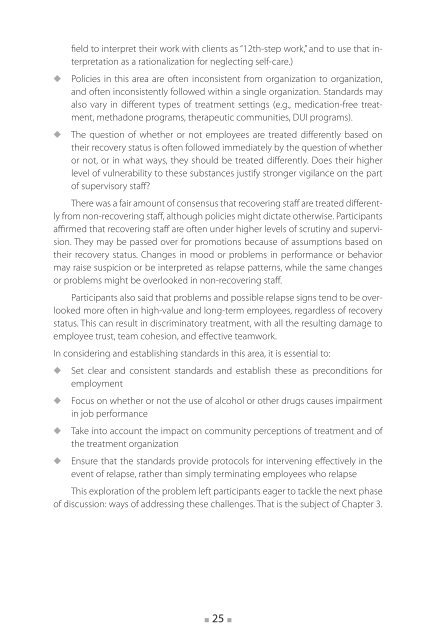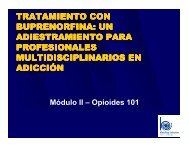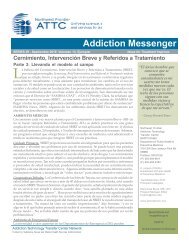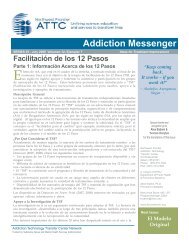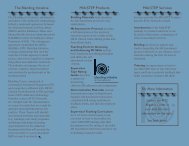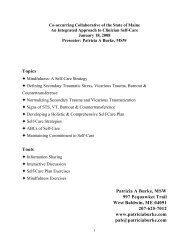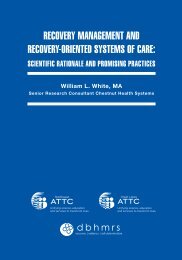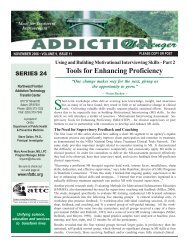alcohol and other drug problems among addiction professionals
alcohol and other drug problems among addiction professionals
alcohol and other drug problems among addiction professionals
Create successful ePaper yourself
Turn your PDF publications into a flip-book with our unique Google optimized e-Paper software.
◆◆field to interpret their work with clients as “12th-step work,” <strong>and</strong> to use that interpretationas a rationalization for neglecting self-care.)Policies in this area are often inconsistent from organization to organization,<strong>and</strong> often inconsistently followed within a single organization. St<strong>and</strong>ards mayalso vary in different types of treatment settings (e.g., medication-free treatment,methadone programs, therapeutic communities, DUI programs).The question of whether or not employees are treated differently based ontheir recovery status is often followed immediately by the question of whetheror not, or in what ways, they should be treated differently. Does their higherlevel of vulnerability to these substances justify stronger vigilance on the partof supervisory staff?There was a fair amount of consensus that recovering staff are treated differentlyfrom non-recovering staff, although policies might dictate <strong>other</strong>wise. Participantsaffirmed that recovering staff are often under higher levels of scrutiny <strong>and</strong> supervision.They may be passed over for promotions because of assumptions based ontheir recovery status. Changes in mood or <strong>problems</strong> in performance or behaviormay raise suspicion or be interpreted as relapse patterns, while the same changesor <strong>problems</strong> might be overlooked in non-recovering staff.Participants also said that <strong>problems</strong> <strong>and</strong> possible relapse signs tend to be overlookedmore often in high-value <strong>and</strong> long-term employees, regardless of recoverystatus. This can result in discriminatory treatment, with all the resulting damage toemployee trust, team cohesion, <strong>and</strong> effective teamwork.In considering <strong>and</strong> establishing st<strong>and</strong>ards in this area, it is essential to:◆◆◆◆Set clear <strong>and</strong> consistent st<strong>and</strong>ards <strong>and</strong> establish these as preconditions foremploymentFocus on whether or not the use of <strong>alcohol</strong> or <strong>other</strong> <strong>drug</strong>s causes impairmentin job performanceTake into account the impact on community perceptions of treatment <strong>and</strong> ofthe treatment organizationEnsure that the st<strong>and</strong>ards provide protocols for intervening effectively in theevent of relapse, rather than simply terminating employees who relapseThis exploration of the problem left participants eager to tackle the next phaseof discussion: ways of addressing these challenges. That is the subject of Chapter 3.n 25 n


